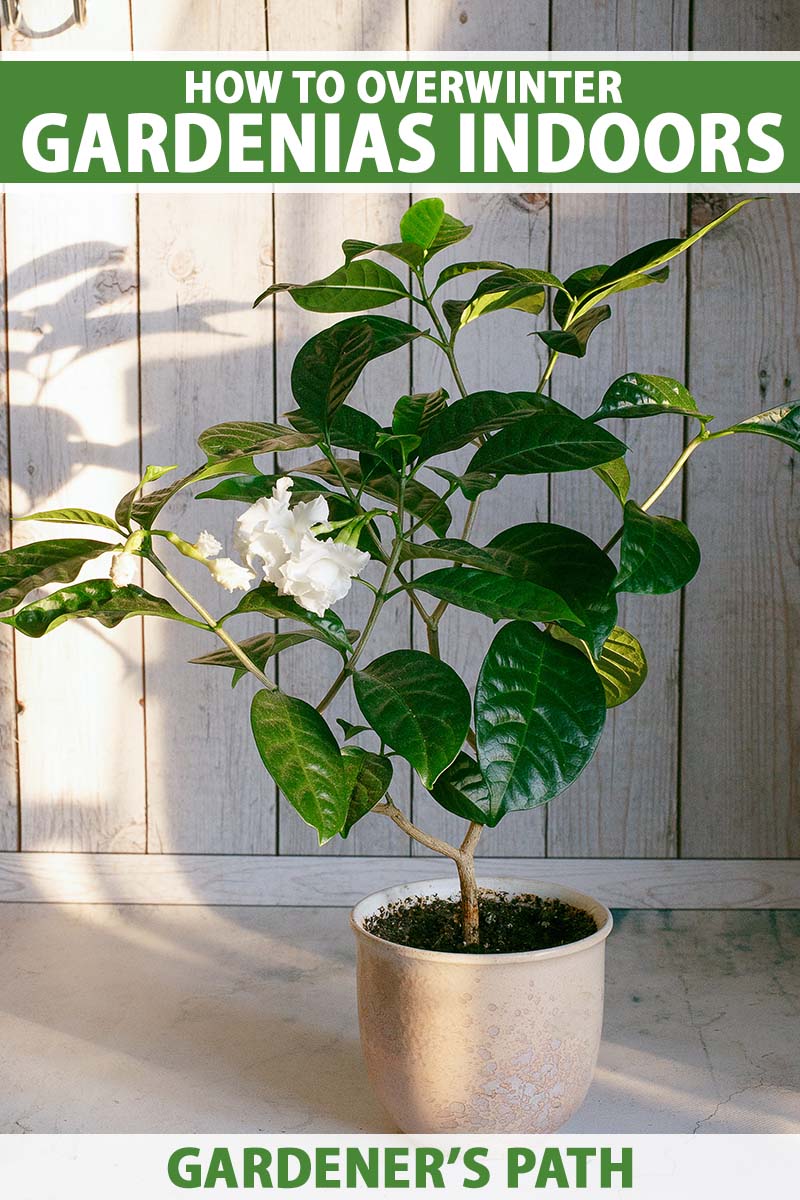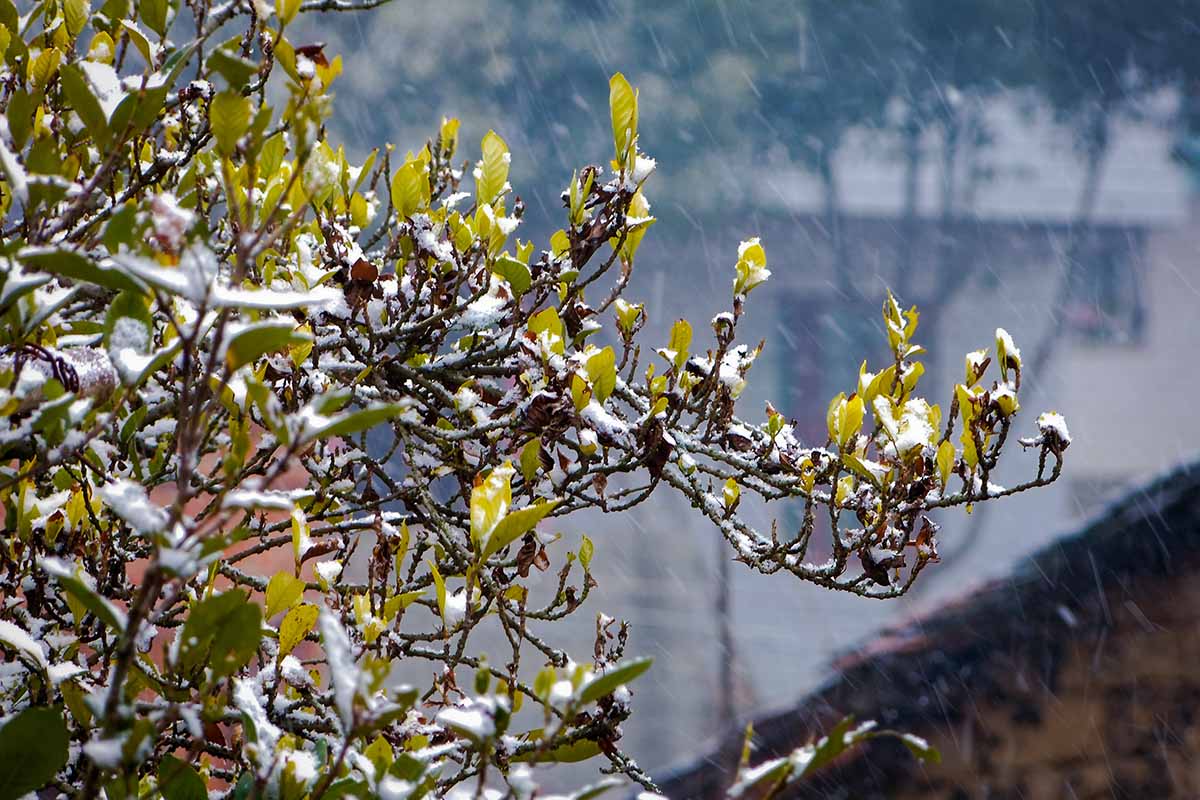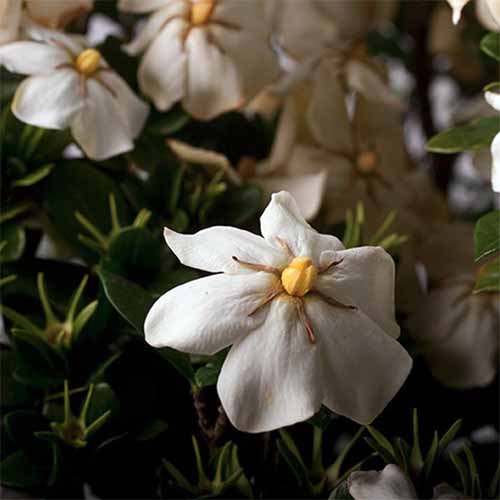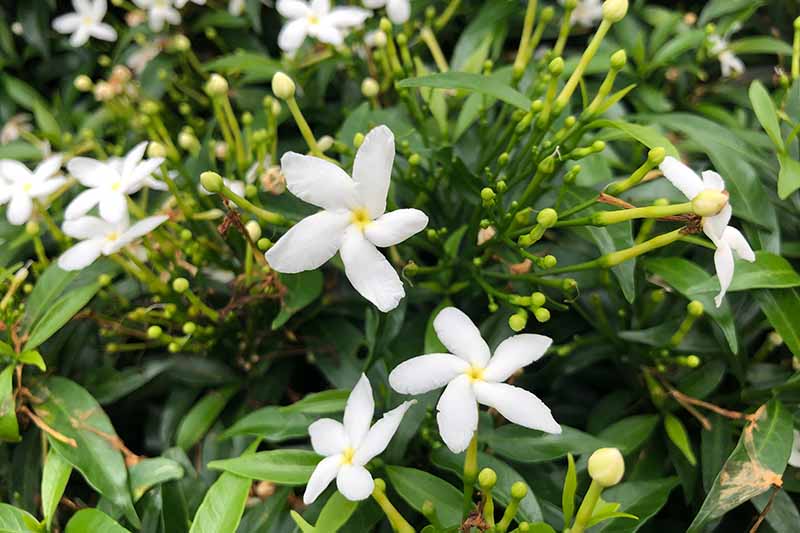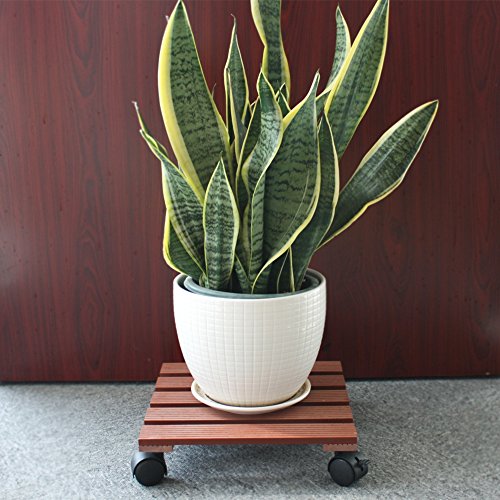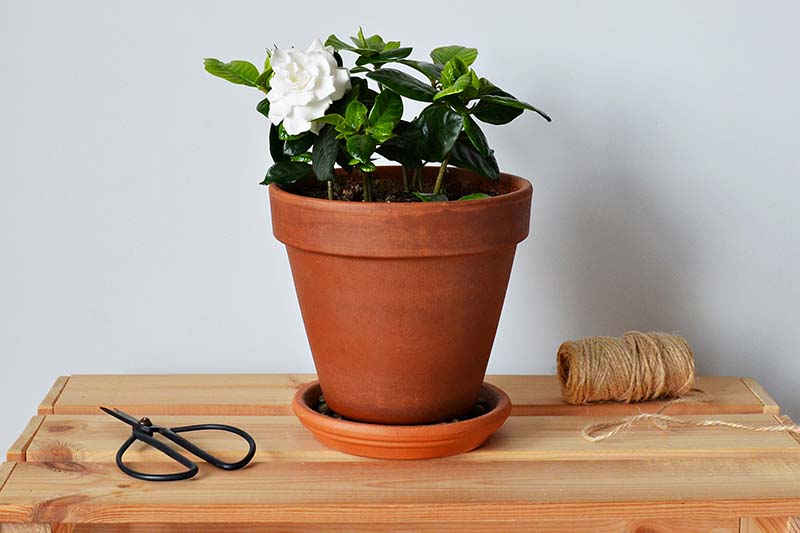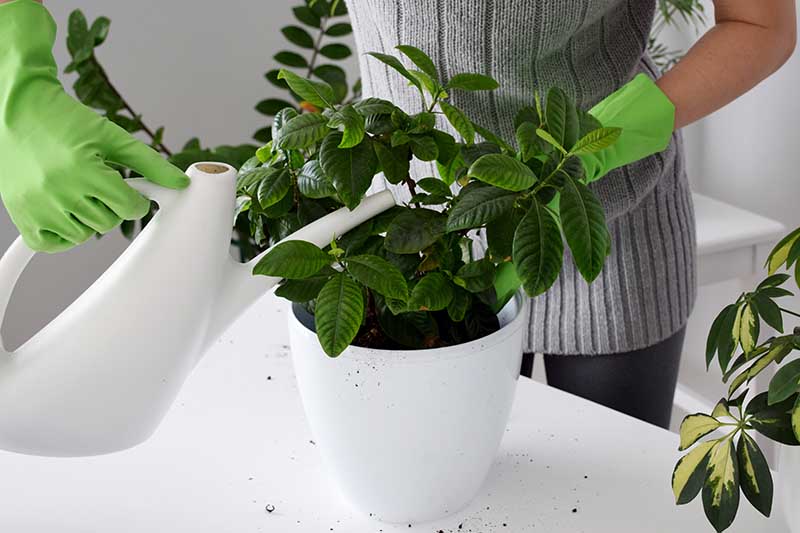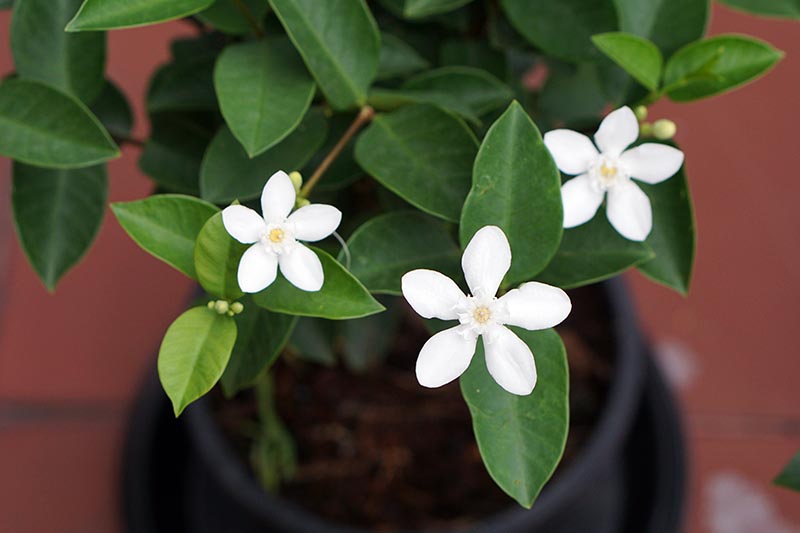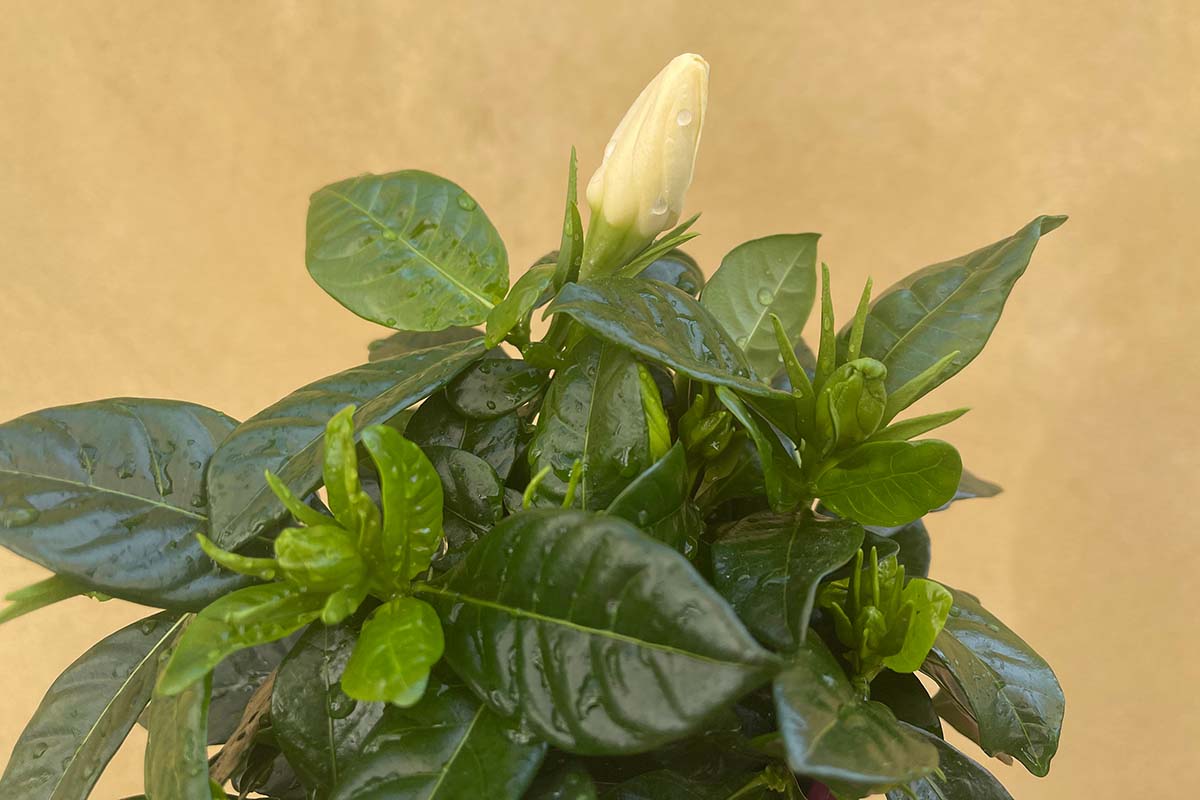The flowering shrub Gardenia jasminoides, also known as Cape jasmine, is subtropical. And you can only grow it outdoors as a perennial if you garden in a warmer climate. These flowering evergreen shrubs are hardy in areas that have hard freezes, but not where winter temperatures sink below 10°F, or for some types, below 5 or even -5°F. If you have your heart set on gardenias but you live in an area with winter weather they can’t survive, you can still grow them. You’ll just need to take them indoors to overwinter. We link to vendors to help you find relevant products. If you buy from one of our links, we may earn a commission. That’s the process I’ll describe here, beginning with preplanning and taking you through the best ways to tend this flowering beauty once it’s in your home. Here’s what I’ll cover:
Are Gardenias Cold Hardy in My Zone?
Most older gardenia cultivars are hardy in Zones 8 to 11, while a few varieties that have been bred more recently are able to sustain the colder temperatures in Zone 7 or even Zone 6. If you’d like to plant G. jasminoides in a border, garden bed, or as part of a mass planting or hedge outdoors year-round, you’ll need to determine whether you’re in Zone 8 or higher, which would mean the temperatures don’t typically dip below 10°F. In those zones, you can grow the old favorites outdoors, like the diminutive ‘White Gem,’ which grows one to two feet tall and has single, waxy, white blossoms. If you’re planning to plant a gardenia in the ground that can survive the winter in Zone 7, you’ll need to seek out one of the hybrids that’s been developed more recently for better cold resistance. There are even a few varieties that some nurseries recommend for growing as outdoor perennials in Zone 6b, a subzone with a minimum average temperature of -5 to 0°F. One of those is Swan Queen®, which features double blooms on bushes that reach an average height of four feet, and boast improved disease resistance. Scent Amazing™ Part of the Southern Living Collection available from Home Depot, it attains three feet in height and has single white blossoms. The plants are shipped in two-gallon containers. But I can’t emphasize this enough: If you live outside the range of growing zones specified for a particular cultivar, don’t try to grow it outdoors anyhow – not year round, at least. This flower is already pretty picky about light, humidity, and fertilizer, so it’s not worth adding more risk by planting it outside of its sustainable temperature range. It will not live! Fortunately you still have the option of growing gardenias in colder climes if you heed the following advice for overwintering. Take a holistic approach, beginning with cultivar selection and concluding with an extra boost of TLC while the shrub is living indoors to wait out the freezing weather. Let’s begin with the overwintering preplanning you’ll need to complete before Jack Frost makes an appearance.
Plan Ahead for Overwintering
You can attempt to bring a gardenia inside at the last minute, and it might work. But you increase your odds of keeping the plant alive when you plot your strategy starting the spring or summer before, or better yet, before you procure your plant. It’s crucial to plant your selected cultivar in a container, even when it will live outdoors in the warm months. Unlike hot peppers and certain perennials that can survive being dug out of the garden and potted to bring in for the winter, gardenias loathe transplanting. They don’t like to have their roots disturbed, and once they’ve suffered transplant shock, your gardenias are probably goners. They demand humidity and consistent moisture all year long, no matter where they are growing, so make sure you fill your container of choice with well-draining soil with plenty of humus. Pick a pot that will retain moisture and that has a drainage hole in the bottom. It also needs a detached saucer at least an inch deep, to catch any excess water that you’ll pour off after watering. Since your gardenia won’t be living outside when the weather turns cold, you can select a variety with any degree of cold hardiness when you opt to overwinter it indoors. But you might have an easier time growing smaller cultivars, since they’re easier to move. Wheeled Plant Caddy I realize it might seem odd to worry about being able to wheel a plant around when that chore is six months or more away, but it’s far easier if you start out with a portable planter. Popular types that will do best in containers include ‘Radicans,’ a dwarf variety that grows two or three feet tall, with one- or two-inch, spiral-shaped, multi-petal blooms, and ‘Double Mint,’ a compact shrub that reaches about three feet tall at maturity, with double blooms. Before you opt for any cultivar that will need overwintering, make sure it will have what it needs when you bring it indoors for the colder months. While it’s tempting to think you’ll be able to experiment until you find the right spot, these flowering houseplants don’t do well with frequent moves. Instead, try to have a place in mind and get it all set up before the chilly weather hits. This inside spot should have a temperature in the 55 to 60°F range at night, and 70 to 75°F during the day. It should also provide about four hours of sunshine or strong light, but not oppressive, hot, direct sunlight. The best scenario offers morning sunlight and afternoon shade. To create that ideal, you’ll need a sunny south or west-facing windowsill, or perhaps a grow light with a timer. Also determine how you’ll provide the 50 percent humidity required for G. jasminoides to flourish, perhaps with a tray of moistened sand or wet pebbles placed beneath the pots. A humidifier could work if you’re up for the muss and fuss of keeping it full and clean. You can find more strategies for growing gardenias as houseplants here. While the plants are still growing outdoors, deadhead the spent flowers so they don’t put any energy into forming berries. Also prune the plants after they complete the blooming cycle in mid- to late summer. Use sharp, clean scissors or clippers to remove any dead branches, brown leaves, or scraggly flowers. Then trim just a few inches or so, to maintain their shape. Hard pruning beyond early fall will decrease the number of blooms for the next season, so avoid that if possible. Also schedule the clipping at least a month ahead of overwintering, so the plants have a chance to recover before you subject them to the stress of a move into the house. There’s one more bit of preparationI recommend, although it’s not a “make or break” part of the overwintering process. If possible, take a couple of cuttings to root a month or so before you bring the plants in for the winter. That way, if the plant languishes, you’ll have some new transplants available to plant out the following spring. Look for step-by-step instructions for rooting gardenia cuttings in our general growing guide. Once you’ve laid that groundwork, you’ll be prepared to bring the plants indoors at the proper time. Keep reading for instructions to make a successful transition indoors.
Make the Move
How can you tell whether it’s time to bring a gardenia inside? To avoid the huge temperature shifts that can cause these plants to decline, make the move when nighttime temperatures start to get chilly, with lows around 60°F. All cultivars can survive temperatures at least as cold as the average low temperature range in Zone 8, which is 10 to 20°F. The ones that are hardy down to Zone 7 can survive in temperatures as low as 5°F, and the varieties that can handle the winter chill in Zone 6 can make it through when the mercury in your outdoor thermometer dips a few degrees below zero, down to -5°F. But don’t wait for those frigid temperatures to loom before bringing the plants indoors. Instead, take them inside while both the outdoor temps and your indoor setup are in the preferred range of 55 to 75°F, so the plant doesn’t have to acclimate gradually. Also, before you wheel or tote the plant to its new, sunny, humid, warmish location, be sure to do what you can to keep any bug eggs or insects from catching a ride inside. Check the soil, stems, and both sides of the leaves for signs of pests like aphids, scale, or whiteflies. Be sure to wipe off any you spot with a water-moistened cotton pad, or employ an insecticidal soap if needed. Wash the outside of the planter and the whole saucer with hot, soapy water. Rinse and dry them, too.
Indoor Care Tips for Gardenias in Winter
To tend gardenias indoors in cold weather, be sure to maintain sufficient moisture. The top two inches of the soil should be allowed to dry out before you get out the watering can, which you can determine by plunging a finger into the outer edge of the soil surface, or by using a moisture meter. Give the plants a thorough soaking, and then wait 20 to 30 minutes to let the excess drain into the saucer at the bottom. Be sure to discard it, since standing water is the enemy of this flowering shrub. Mist the plants every few days with plain water, and provide humidity via that tray of wet pebbles or a humidifier. As you did when the flower was growing outdoors, keep applying an acidifying fertilizer on a regular schedule, following the manufacturer’s instructions for the amount and frequency. Remember, frequent fertilizing will eventually lead to an accumulation of salt in the soil. You can eliminate the buildup, which can lead to root rot and other maladies, by flushing the soil with two or three rounds of water once every six months or so. Let the excess drain into the saucer below, and then pour it out in the sink. Also keep an eye out for the bugs that are so fond of gardenia houseplants. You can find directions for preventing and eliminating aphids, mealybugs, mites, or whiteflies in our guides to dealing with each of these insect pests. If you spot any pests before an infestation becomes widespread, you can usually get rid of them with a strong stream of water or insecticidal soap spray before the plant succumbs to the bugs, or the ailments they can transmit. These tactics should carry you through to the spring. As the temperatures start to warm, you’ll be able to bring your overwintered plants back outside again. Don’t do this before nighttime temperatures are at least 60°F, even if the daytime range is consistently in the 60s or 70s. And keep an eye on the weather forecast. If colder temperatures are expected after you’ve returned the plants to their outdoor posts, bring them in again, to a place with the same ample light and warm temperatures they’ve been enjoying all winter. If you make the attempt, I sure hope you end up with sweet scents and pale-petaled blooms to dispel the winter doldrums. Already have experience with growing gardenias in a zone where they’re not winter-hardy? The comments section below awaits your input, whether that’s advice or questions. Feel free to share photos as well! And if you’re fascinated with evergreen bushes that bloom, read these flowering shrub guides next:
How to Manage Gardenia Winter Cold DamageHow to Grow and Care for Butterfly BushGrow Mountain Laurel for an Impressive Garden Landscape
